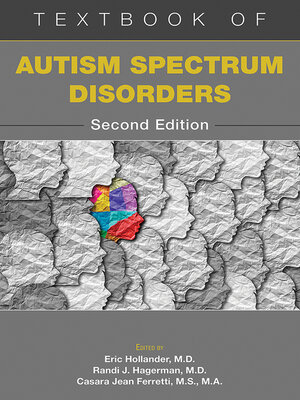
Sign up to save your library
With an OverDrive account, you can save your favorite libraries for at-a-glance information about availability. Find out more about OverDrive accounts.
Find this title in Libby, the library reading app by OverDrive.



Search for a digital library with this title
Title found at these libraries:
| Loading... |
More than 40 years after the official recognition of infantile autism in DSM-III, numerous questions remain about autism spectrum disorder (ASD)—its possible causes, assessment, and most effective treatments.
This second edition of the Textbook of Autism Spectrum Disorders features contributions from dozens of experts as it reviews the latest research on these topics and more.
As ambitious in scope and exhaustive as the preceding edition, this guide is organized by sections that tackle:
Unrivaled in its thoroughness, the book includes summary points in each chapter for ease of reference and lists of recommended readings that offer readers the opportunity for further study and exploration. For all those in the ASD continuum of care—psychiatrists, psychologists, neurologists, social workers, speech therapists, educators, and patient families—this is an essential resource.






